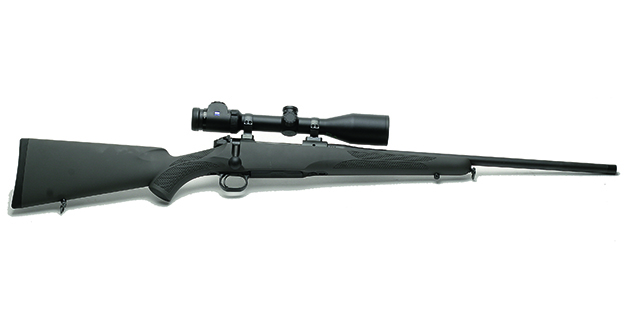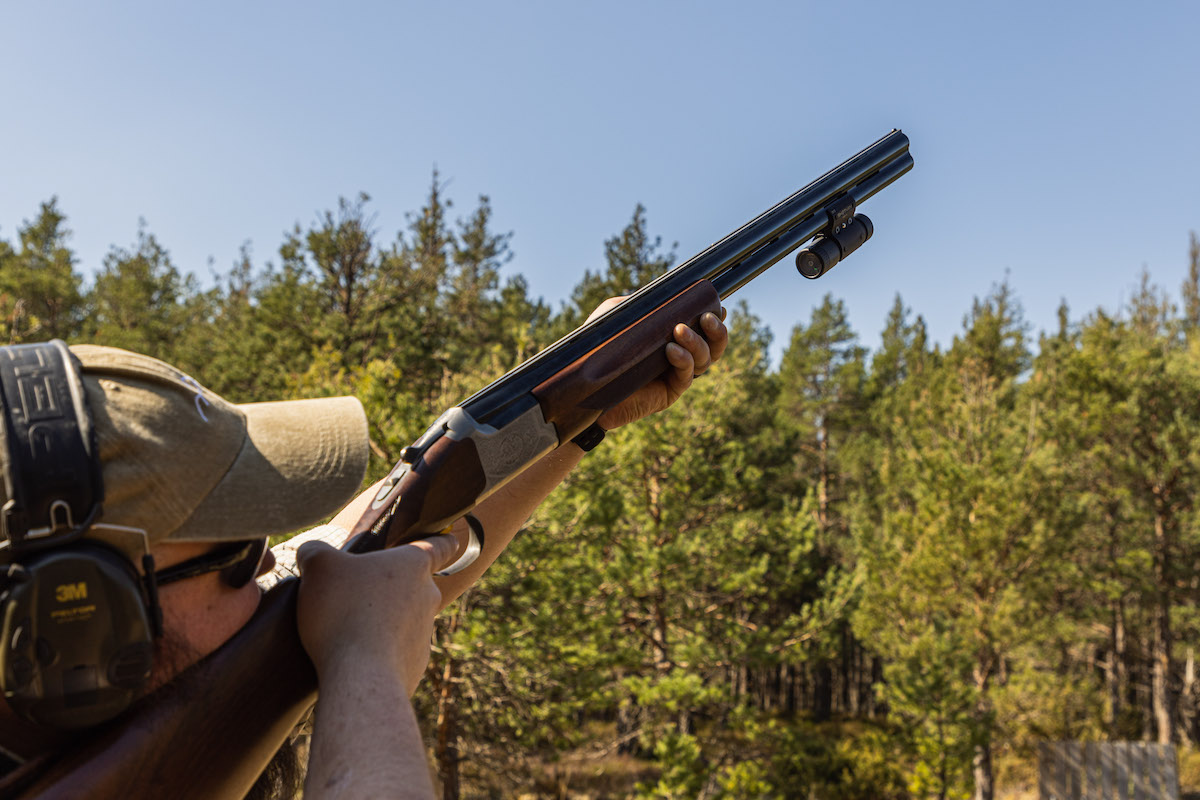Mauser M12 Extreme
For a fixed-barrel rifle at this price point, the Mauser is hard to beat, says Bruce Potts

Mauser M12 Extreme
Overall Rating: 89%
Manufacturer: Mauser
Pros: Flawless performance with a variety of loads
Price as reviewed: £1,665
Cons: Better than most synthetic stocks
Mauser has a superb heritage in the sporting and military world and its M03 series of rifles has proven popular. The new M12 model is set to be just as well received. What separates the M12 from previous models is its more affordable price, making Mausers available to more shooters. This has been achieved by making the M12 a fixed-barrel rifle, yet the quality that one would expect from Mauser has not been compromised. For this test, I used the Extreme model, which has the best synthetic stocks on a factory rifle that I’ve seen, with an ultra-slick action.
Barrel and action
The barrel and action is well designed. It comes threaded with a 15mm/1 pitch,and the 21.5in long barrel comes supplied with a muzzle cap. The overall finish is a practical bead-blasted non-glare blue.
The barrel profile is a Sporter, with a gentle taper from 0.756in in front of the receiver to 0.662in at the muzzle end, and is free floated all the way down to the receiver ring. The action is smooth to operate. Its arrangement of two sets of three bolt lugs allows a 60° bolt open position. I particularly liked the bolt handle, which is straight with a low lift, giving a good controlled feed operation.
One of the best features is the inset extractor claw and twin plunger-type ejectors. These ensure that spent casings really are sent flying out of the action when reloading.
Stock
The M12 synthetic stock combines a light weight with strong structural integrity, and this is clearly a rifle designed by a real shooter, because it handles beautifully. Moulded in two halves, the stock still has a heft to it without being heavy, while the fore-end is strengthened to prevent any twisting. The exterior is grey and it has a tactile soft finish, much like natural rubber, which aids grip. This is further enhanced by two separate panels of moulded basketweave chequering, one to the fore-end and one to the pistol grip. There is no cast or cheekpiece, so the rifle has an ambidextrous feel. Of particular note is the classic high raised comb, which gives the shooter perfect scope alignment.
Another excellent feature is the bedding system, which has a transverse steel lug to matt the front receiver, while the rear is perfectly aligned with an aluminium pillar. This means you can take the action/barrel out of the stock for transporting the rifle in a short case. When re-assembled, the rifle is ready to go. I took the M12 apart, then assembled it again and found that there was no loss of zero at all.
Trigger, safety and magazine
The M12 has a superb trigger and was a perfect factory setting of 2lb on this model. It broke so cleanly and crisply, that it really allows you to enhance your group sizes on target. It’s non-set, as with many European rifles, and the single stage pull is perfect.
I liked the safety, too. I’m not normally a fan of the bolt-shroud mounted safety, but it is the norm in modern Mausers and on this rifle it is user-friendly. When cocked, a small red button protrudes through the centre of the bolt shroud to indicate the M12 is cocked. The safety is activated by a wing lever. When forward, a white dot points to a red “F” for fire; in the mid-way position, the white dot aligns with the middle dot, so the trigger is safe, but the bolt can be opened. In the third position, the safety locks both the bolt and trigger.
The magazine is detachable and made entirely from a polymer with a double-stack arrangement. This fits into an aluminium floorplate, with a release lever in front of the magazine. Push it up and the magazine pops out easily.
Accuracy and targets
The M12 cycles and loads smoothly and reliably. Factory loads grouped at between 1in to 1.5in for three shots at 100 yards. The best were the Norma 120-gr Ballistic Tip loads. These shot a healthy 2,761fps for 2,032ft/lb energy, with a group at the 1in to 1.25in mark.
However, it is worth remembering that not all calibres are suitable for a shorter barrel, and at 21.5in, the M12’s barrel would be classified as such. On test, the heavier 156-gr Sako and 140-gr Federal rounds’ velocity dropped below the Scottish minimum of 2,450fps.
Reloads always improve a rifle’s ballistic performance. Of the lighter loads, Hornady makes a 100-gr soft-point which achieved 3,087fps using 46 grains of Alliant RL17 powder and a group of around the 1in to 1.25in mark.
I used Speer and Nosler bullets in the 120-gr weight. Using 45 grains of H4831SC powder, the Speer soft points achieved an impressive group of 0.95in and 2,542fps. The Nosler 120-gr Ballistic Tips shot well, similar to their factory-loaded counterparts. I boosted the velocity from 2,761fps in the factory load to 2,811fps using 44 grains of RL- 17 powder. The 140-gr Hornady SST bullets achieved the Scottish minimum velocity with a load of 41.25 grains of Vit N 160 powder, travelling at 2,503fps and grouping at between 0.75in and 1in.
Finally, I tried some old 160-gr Interlock round-nosed loads, using 40 grains of Hybrid 100 V powder. With a velocity of 2,322fps, the grouping was not as good, at 1.5in. It’s clear that the Mauser M12 performed best with bullets between 120- gr and 140-gr — when loaded correctly, it will be Scottish deer legal.
Contact Blaser Sporting LTD through their website.
Verdict
Hard to beat as a stalking rifle and it offers genuine value








